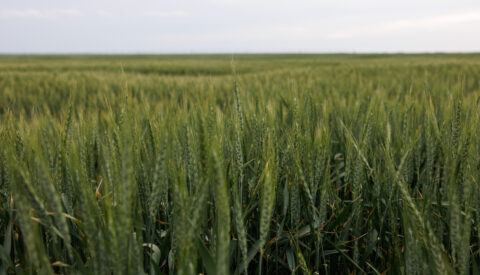According to USDA’s June World Agricultural Supply and Demand Estimates (WASDE), the U.S. sorghum outlook for 2025/26 is: Increased U.S. production (driven by higher yields) Higher total use driven by higher exports despite reduced domestic feed use While the supply side of the balance sheet certainly could be achieved, the demand side of the balance sheet would require a complete, 180-degree turnaround in exports, driven by a single customer: China. Farmers should be prepared for sorghum prices to continue to struggle for the remainder of 2025. They should reward any price rallies, as they are likely to be short lived should Chinese buyers remain on the sidelines. Supply Outlook USDA estimates production at 392 million bushels, up 14% year-over-year (YOY), driven by a 12% increase in yields (levels not achieved since 2021). Total U.S. supplies are projected to increase even further, with higher beginning stocks up by 19 million bushels, an increase of nearly 60%, due to disappointing old crop exports. Total new crop supply is estimated at 444 million bushels, up 67 million bushels or 18% YOY. Demand Outlook U.S. domestic demand, which consists of feed use and food, seed and industrial uses, is projected at 155 million bushels, down 70 million bushels, or 30%, from last crop year. Feed demand is expected to decrease to 85 million bushels, down 45% YOY, and food, seed and industrial use (including ethanol) is unchanged at 70 million bushels. Lower domestic use is offset by the assumption of higher exports. Exports are projected at 250 million bushels, an increase of 150 million bushels, or 150%. If realized, the U.S. would continue to be the world’s top exporter. USDA is assuming that China will more than double total sorghum imports from the globe, estimating the 2025/26 import level will increase from 165 million bushels in 2024/25 to nearly 335 million bushels. UDSA’s export projections – for new crop and old crop – are too optimistic. With the old crop marketing year nearly complete, U.S. exports of sorghum would need to almost double in the next two months to achieve USDA‘s old crop export forecast. I forecast full year sorghum exports for 2024/25 will be just over 70 million bushels, 30% below USDA’s current forecast and almost identical to export sales during the 2018/19 crop year. The assumption that new crop exports would exceed the glory days of 2023/24 when the U.S. exported over 230 million bushels does not seem likely. Global Competition And Uncertainty The world’s other top sorghum exporters – Australia and Argentina – are both expected to increase exports in 2025/26. Australia’s production is expected to increase almost 8% to 98.42 million bushels. The recent volatility in trade discussions between the U.S. and China could be influencing export purchases. However, given its geographic proximity, Australia is likely to be China’s preferred supplier as we look to new crop sales. Additionally, in the June WASDE, USDA reduced China’s old crop imports for both corn and sorghum due to weak demand for energy feeds. Of course, a new trade deal would be positive, but price rallies could be short lived depending on the length of any potential trade agreement. Also, as of mid-June, the new crop 2025/26 export sales for sorghum are near zero at only 11,000 bushels. Prices Dependent on Future of Exports If export demand truly does recover in 2025/26, this will be welcome news. If new trade deals are executed with other countries such as India, which currently has a 50% tariff on U.S. sorghum, USDA’s forecast might be achievable. It is imperative that the U.S. continues to pursue export opportunities with other trade partners besides China for sorghum. As we have seen thus far in 2025, trade deals take time, so sorghum producers will need to be patient if they want to hold out for hope of higher prices later in the 2025/26 season. If exports do not materialize, sorghum prices have further downside risk. I forecast an average farm price for 2025/26 on the low side at $3.48/bu. and the high side at $3.90/bu. As sorghum prices get closer to corn, this will help to generate increased domestic demand for more feed and/or ethanol use.
More Articles
See All InsightsAmerican AgCredit stands ready to support our customers to help them weather this most challenging of storms. American AgCredit, the USDA, and other federal entities, along…
Santa Rosa, C.A. (May 1, 2025) – In support of May’s Mental Health Awareness Month, agriculture lender American AgCredit, a member of the Farm Credit System,…
Beef and Grain Market Outlook With heifer retention likely too low to bolster the beef cow herd, can tight supplies continue to support prices amidst a…



